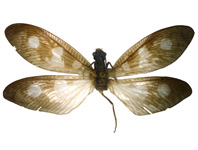Abstract
A new species and a new combination of the family Xyalidae are described from the East China Sea. Elzalia bifurcata sp. nov. is characterized by small body size, relatively long cephalic setae, elongated spicules with bifurcate or y-shaped distal end, simple tubular gubernaculum without apophyses. Elzalia bifurcata sp. nov. differs from the closely related species E. striatitenuis Zhang and Zhang, 2006 and E. mediterranea Vitiello, 1971 by the length of cephalic setae; presence or absence of cervical setae; shape, structure and length of spicules and gubernaculum. Daptonema macrostoma Huang & Xu, 2013 is redescribed and reclassified. The species agrees well with the characters of the genus Paragnomoxyala Jiang & Huang, 2015, such as large buccal cavity; outer labial sensilla papilliform, not setiform; spicules almost straight with slightly curved proximal ends, absence of gubernaculum. Therefore, it is transferred to the genus Paragnomoxyala. As a new combination, the species is named as Paragnomoxyala macrostoma (Huang & Xu, 2013) comb. nov. An emended key to valid species of Elzalia is provided.
References
Castillo-Fernandez, D. & Lambshead, P.J.D. (1990) Revision of the genus Elzalia Gerlach, 1957 (Nematoda: Xyalidae) including three new species from an oil producing zone in the Gulf of Mexico, with a discussion of the sibling species problem. Bulletin of the British Museum (Natural History). Zoology, 56, 63–71.
Chen, Y.Z. & Guo, Y.Q. (2014) Two new species of Lauratonema (Nematoda: Lauratonematidae) from the intertidal zone of the East China Sea. Journal of Natural History, 49 (29–30), 1777–1788.
Chen, Y.Z. & Guo, Y.Q. (2015) Three new and two known free-living marine nematode species of the family Ironidae from the East China Sea. Zootaxa, 4018 (2), 151–175.
https://doi.org/10.11646/zootaxa.4018.2.1Gerlach, S.A. (1957) Die Nematodenfauna des Sandstrandes an der Küste von Mittelbrasilein (Brasilianische Meeres-Nematoden IV). Mitteilungen aus dem Zoologischen Museum in Berlin, 33, 454–455.
Higgins, R.P. & Thiel, H. (1988) Introduction to the Study of Meiofauna. Smithsonian Institution Press, Washington D.C., 488 pp.
Huang, Y. & Xu, K.D. (2013) A new species of free-living nematode of Daptonema (Monhysterida: Xyalidae) from the Yellow Sea. Aquatic Science and Technology, 1 (1), 1–8.
Huang, Y. & Gao, Q. (2016) Two new species of Chromadoridae (Chromadorida: Nematoda) from the East China Sea. Zootaxa, 4144 (1), 89–100.
https://doi.org/10.11646/zootaxa.4144.1.4Hope, W.D. & Aryuthaka, C. (2009) A partial revision of the marine nematode genus Elzalia (Monhysterida: Xyalidae) with new characters and descriptions of two new species from Khung Kraben Bay, East Thailand.Journal of Nematology, 41 (1), 64–83.
Jiang, W.J. & Huang, Y. (2015) Paragnomoxyala gen. nov. (Xyalidae, Monhysterida, Nematoda) from the East China Sea. Zootaxa, 4039 (3), 467–474.
http://doi.org/10.11646/zootaxa.4039.3.6
Jonge, V.N. & Bouwman, L.A. (1977) A simple density separation technique for quantitative isolation of meiobenthos using the colloidal silica Ludox-TM. Marine Biology, 42, 143–148.
https://doi.org/10.1007/BF00391564McIntyre, A.D. & Warwick, R.M. (1984) Meiofauna techniques. In: Holme, N.A. & McIntyre, A.D. (Eds.), Methods for the study of marine benthos. Blackwell Scientific Publications, Oxford, pp. 217–244.
Vitiello, P. (1970) Nématodes libres marins des vases profondes du Golfed du Lion. III. Monhysterida, Araeolaimida, Desmodorida. Téthys, 2, 656–658.
Wang, C.M., An, L.G. & Huang, Y. (2015) A new species of free-living marine nematode (Nematoda: Chromadoridae) from the East China Sea. Zootaxa, 3947 (2), 289–295.
https://doi.org/10.11646/zootaxa.3947.2.11Fonseca, G. & Bezerra, T.N. (2014) Order Monhysterida. In: Andreas, S. (Eds.), Handbook of Zoology. Vol. 2. Nematoda. Walter de Gruyter GmbH, Berlin/Boston, pp. 435–465.
Yu, T.T., Huang, Y. & Xu, K.D. (2014) Two new species of the genus Linhystera (Xyalidae, Nematoda) from the East China Sea. Journal of the Marine Biological Association of the United Kingdom, 94 (3), 515–520.
https://doi.org/10.1017/S0025315413001811Yu, T.T. & Xu, K.D. (2015) Two new nematodes, Pseudelzalia longiseta gen. nov., sp. nov. and Paramonohystera sinica sp. nov. (Monhysterida: Xyalidae), from sediment in the East China Sea. Journal of Natural History, 9–10, 509–526.
https://doi:10.1017/S0025315413001811Zhang, Y. & Zhang, Z.N. (2006) Two new species of the genus Elzalia (Nematoda: Monhysterida: Xyalidae) from the Yellow Sea, China. Journal of the Marine Biological Association of the United Kingdom, 86, 1047–1056.
https://doi.org/10.1017/S0025315406014020

